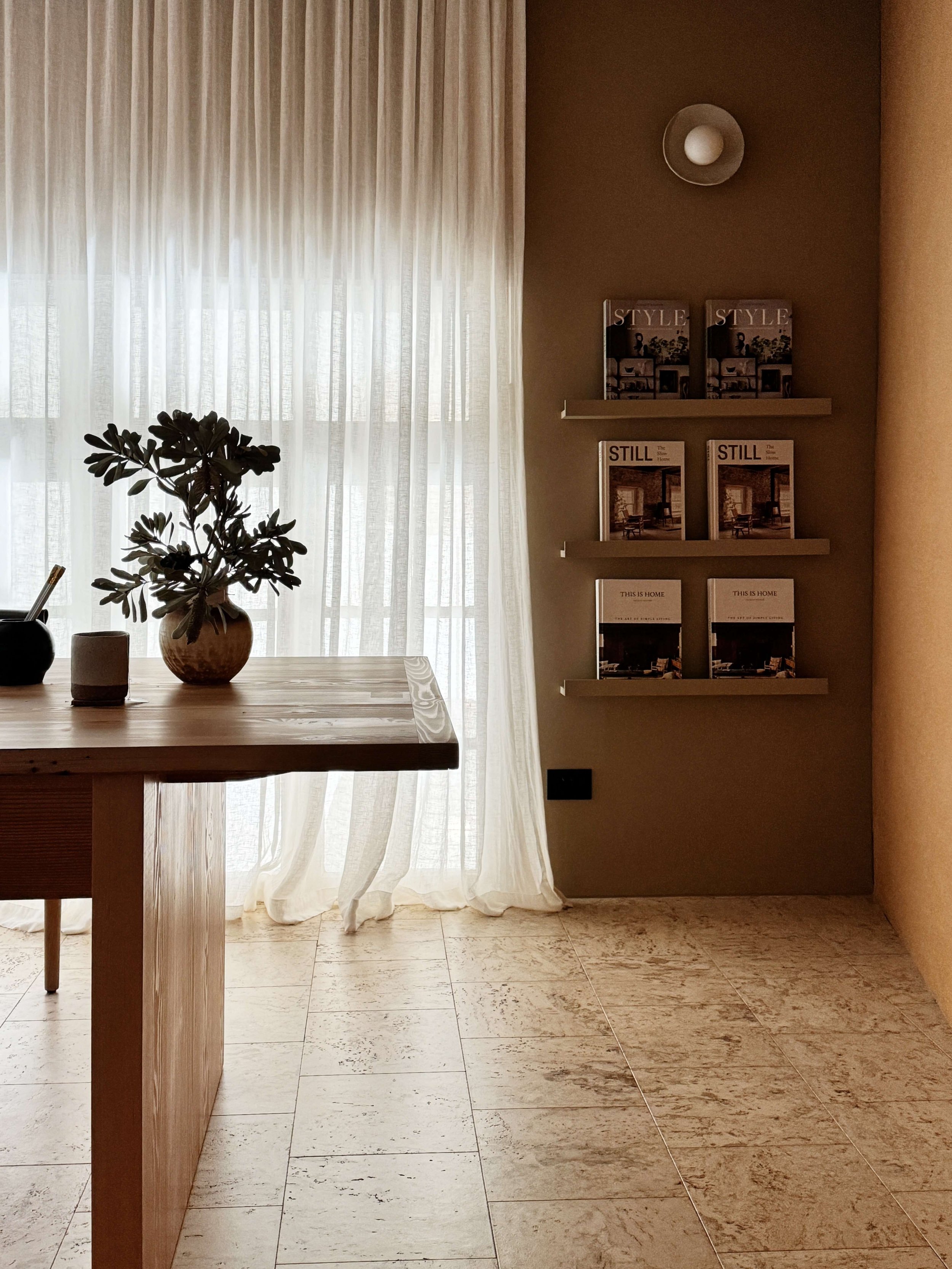DESIGN NOTES – The Surprising Choice For Your Interiors: What You Need To Know About Cork
Have you considered cork for your interiors? Come explore what you need to know about this sustainable material that adds warmth to your floors (and walls!) to help you decide if it’s the right fit for your home.
I’ve recently fallen in love with cork as a material. While it’s been around for many years, it’s been out of favour since its heyday in the 1970s. But if you’re looking to add a new depth to your spaces with a material that feels like a warm embrace, it could be time to explore this beautiful and sustainable design option.
Introducing… DESIGN NOTES
A new series to help you transform your interiors with expert tips, creative ideas and sustainable solutions. In today’s deep dive, explore the benefits of using cork in your spaces.
What is Cork Flooring?
Cork flooring is made from the bark of the cork oak tree, which is mostly found in the Mediterranean region. The bark is harvested without harming the tree, allowing it to regenerate and be harvested again every 9-12 years. This renewable harvesting process makes cork an environmentally friendly flooring option.
Types of Cork Flooring
Cork Tiles: These are glued to the subfloor and come in various sizes and patterns. Cork tiles offer flexibility in design and can be arranged in creative layouts.
Floating Cork Floors: These come as planks or large tiles that click together over an existing floor. They are easier to install and can be removed and reused.
Cork flooring in “Calais Cream” from House of Surfaces (previously Surface Society)
Photography Lynden Foss for Imprint House
Pros of Cork Flooring
Sustainable Choice: Cork is a renewable resource, making it a great choice for eco-conscious homeowners. The harvesting process is sustainable, and cork flooring is often made with minimal chemicals.
Comfort and Warmth: Cork’s natural properties make it comfortable underfoot and warm to the touch. Its thermal insulation capabilities help maintain a pleasant temperature in your home.
Sound Insulation: Cork’s cellular structure provides excellent sound insulation, reducing noise transmission between floors and creating a quieter living environment. This was an added benefit for using it in this office space.
Durability and Resilience: Cork flooring can withstand heavy foot traffic and is resilient to dents and scratches. Its natural bounce-back quality helps it maintain its appearance over time.
Hypoallergenic Benefits: Cork is resistant to mould, mildew, and pests, making it a healthy choice for homes, particularly for those with allergies.
Versatility in Design: Available in various hues, patterns, and textures, cork flooring complements a wide range of interior styles and be incorporated in many creative ways. As just one example, I loved how it has been used in the interiors of The Calile Hotel as a headboard, wall panel and flooring (see below).
Creative Ways To Incorporate Cork
There are many creative ways you can use cork in your interiors. Take a look at how cork has been used as a headboard, wall panel and flooring in The Calile Hotel.
Photography: The Calile Hotel
Photography: The Calile Hotel
Photography: The Calile Hotel
Cons of Cork Flooring
Susceptibility to Moisture: Cork is not waterproof and can be damaged by excessive moisture. It’s best used in areas where it won’t be exposed to standing water, such as kitchens and living rooms, rather than bathrooms or basements.
Fading in Sunlight: Cork flooring can fade when exposed to direct sunlight over time. Using area rugs and curtains can help mitigate this issue.
Cost: While not the most expensive flooring option, cork can be pricier than some alternatives. However, its durability and eco-friendly nature can help justify the investment.
Maintenance: Although relatively low-maintenance, cork flooring requires regular sealing to protect against stains and moisture. This process is relatively simple but needs to be done periodically.
Potential for Indentation: Heavy furniture can cause indentations in cork flooring. Using furniture pads and rearranging furniture periodically can help prevent permanent marks.
Photography Lynden Foss for Imprint House
Cork Installation and Maintenance Tips
Progress photos of the Imprint House office being built.
Proper Sealing: Ensure your cork flooring is properly sealed to protect against moisture and stains. Re-seal it periodically as recommended by the manufacturer.
Regular Cleaning: Sweep or vacuum regularly to keep dirt and debris from scratching the surface. Use a damp mop with a pH-balanced cleaner for deeper cleaning.
Protect from Sunlight: Use window treatments or area rugs in rooms exposed to direct sunlight to prevent fading.
Furniture Pads: Use protective pads under furniture legs to prevent indentations and scratches.
Is Cork Right For Your Interiors?
Cork flooring is a versatile, sustainable, and stylish choice for those looking to make a statement with their interior design. While it does require some maintenance and consideration of placement, its benefits often outweigh the drawbacks. By understanding the pros and cons, you can make an informed decision and enjoy the unique character and comfort that cork flooring brings to your home.
Want To Design An Authentic Interior That Stands The Test of Time?
Download my free guide here: The 10 Foundations To Create Your Dream Home.













